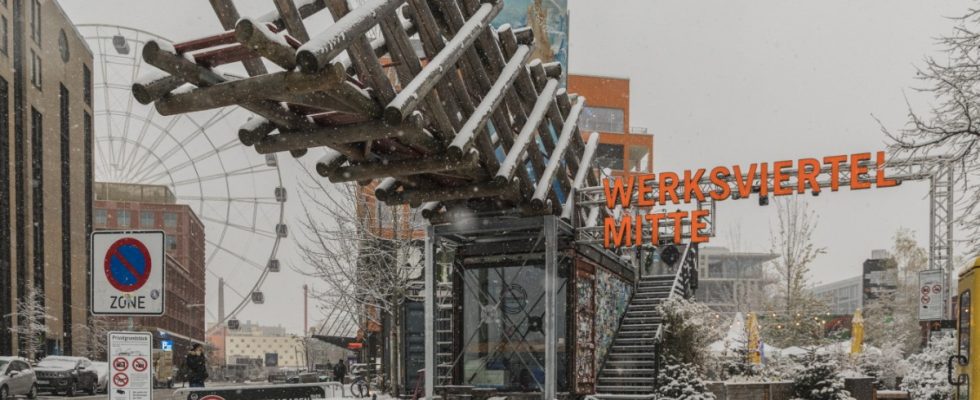A labyrinth of underpasses and railway tracks (aka the Ostbahnhof) separates the urban Werksviertel from historic Haidhausen. Even the underground signage doesn’t seem to be able to prevent some people from getting lost in the corridors. The people of Munich have so far waited in vain for an urban development connection between the two districts, for example in the form of a pedestrian bridge. Now the operators of the Werksviertel commemorate the planned connection with a work of art. Its name: the bridge sprout.
Many Munich residents also remember the project by the Bow-Wow studio from Tokyo in cooperation with the Hannes Rössler architectural firm in another context. There it was on the banks of the Isar and became a popular selfie spot. But now it has been sitting on one of the shipping containers in the Werksviertel on the corner of Atelierstrasse and Friedensstrasse since November 23rd. The wood of the installation, based on the tradition of rafting, contrasts with the concrete, glass and steel in its surroundings.
A bridge, actually made to bring places together, that stretches longingly towards Haidhausen – and leads to nowhere. With its fragmentary character, the bridge rung points to what is missing here: the connection. If you otherwise go on a bridge to get to a new area, you are faced with the abysses of the S-Bahn gorges. From above, the gap appears endless, the old town on the other side inaccessible.
The sprout, also known as the “Bridge to Nothing,” stood on the Isar for more than two years. At its new location in the east of Munich, the access stairs and fall protection are still missing before the work of art opens and is accessible to everyone. The bridge rung has been left to OTEC GmbH, which operates the Werksviertel, until 2033. A pious hope that it might not take quite as long until a proper bridge leads over the railway site to Haidhausen.

